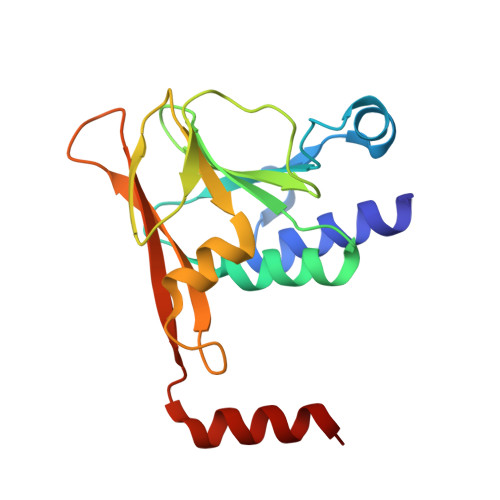Unexpected features and mechanism of heterodimer formation of a herpesvirus nuclear egress complex.
Lye, M.F., Sharma, M., El Omari, K., Filman, D.J., Schuermann, J.P., Hogle, J.M., Coen, D.M.(2015) EMBO J 34: 2937-2952
- PubMed: 26511021
- DOI: https://doi.org/10.15252/embj.201592651
- Primary Citation of Related Structures:
5DOB, 5DOC, 5DOE - PubMed Abstract:
Herpesvirus nucleocapsids escape from the nucleus in a process orchestrated by a highly conserved, viral nuclear egress complex. In human cytomegalovirus, the complex consists of two proteins, UL50 and UL53. We solved structures of versions of UL53 and the complex by X-ray crystallography. The UL53 structures, determined at 1.93 and 3.0 Å resolution, contained unexpected features including a Bergerat fold resembling that found in certain nucleotide-binding proteins, and a Cys3His zinc finger. Substitutions of zinc-coordinating residues decreased UL50-UL53 co-localization in transfected cells, and, when incorporated into the HCMV genome, ablated viral replication. The structure of the complex, determined at 2.47 Å resolution, revealed a mechanism of heterodimerization in which UL50 clamps onto helices of UL53 like a vise. Substitutions of particular residues on the interaction interface disrupted UL50-UL53 co-localization in transfected cells and abolished virus production. The structures and the identification of contacts can be harnessed toward the rational design of novel and highly specific antiviral drugs and will aid in the detailed understanding of nuclear egress.
- Department of Biological Chemistry and Molecular Pharmacology, Harvard Medical School, Boston, MA, USA.
Organizational Affiliation:



















